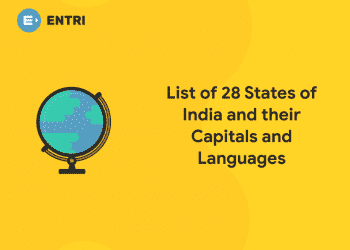Table of Contents
AIDS which is the abbreviated form of the disease acquired immune deficiency syndrome is the most dangerous and embarrassed disease of the world now. Don’t whether it is the most dangerous since the covid 19 pandemic is spreading and killing people in world wide. But amidst of this pandemic, we can surely say that AIDS is one of the most dangerous and embarrassing disease of today. AIDS caused by the HIV virus is considered as on the deadliest sexually transmitted disease. But whether the AIDS is only transmitted through sexual intercourse? Well, we need to discuss. Since we are all rushing for the invention and development and intake of the Covid 19 vaccine by different countries, have you ever thought do we have a vaccine against this deadliest disease? This the primary aim of the World AIDS Vaccine day. Each and every citizen should at least think about the AIDS disease and make themselves aware of these diseases and know about the vaccine possibilities and developments on vaccination against AIDS disease. As we are heading towards the World AIDS Vaccine Day let us think about the theme history and importance of the World AIDS Vaccine Day 2023.
Register in to get the latest Exam Study Materials, PDFs, Video Lessons, Mock Tests! Limited Offer!
What is AIDS and its Causes?
AIDS is the abbreviated form of the disease Acquired immune deficiency syndrome which is considered as a sexually transmitted disease (STD). Even though it is considered as a sexually transmitted disease it can be transmitted in various form. The AIDS disease is caused by a virus called HIV virus. HIV Virus belongs to the group of the genus lentivirus which is a part of the family of retriviridae. The HIV virus targets the human immune deficiency system and weaken the immunity of the person. HIV may not cause any disease but it can cause the reason for the rapid formation of other diseases since the immunity system of the individual is attacked. Normally it is said as the sexually transmitted disease it can be caused other modes of transmission also. By blood transfer, by saliva transfer, by semen transfer and other sexual fluids (STD), by breastfeeding of the infected mother etc are the ways in which the HIV virus can be transmitted. No need to worry as a covid virus since it cannot transmit through air or contactless transmission. It can only be transmitted through body fluid.
The Treatment for AIDS: ART
1: Who was the first woman President of India?
The AIDS disease is one of the diseases which can be considered as no complete cure is possible till now. Only the condition can be controlled and maintained using Antiretroviral therapy (ART). When we look back to the history of the treatment of the AIDS many scientists have put forward their maximum effort t to formulate a medicine for the treatment of the disease. As a result of this effort in 1985 a drug called Azidothymidine (AZT) has been found and experimented on AIDS infected persons. The drug primarily seems to be effective but in a short span of time they discovered that this may not be effective in a short span of time or in long run. Since the virus is subjecting to genetical upgradation by itself (mutated virus) the mono drug therapy does not seem to be effective in the infected persons. In 1995 the scientists introduced a combination of drugs called AIDS cocktail. In the initial time it was called by the name Highly Active Antiretroviral therapy (HAAT). Then it is updated and called combination antiretroviral therapy (cART) or rather shortly Antiretroviral Therapy (ART).
ART is the primary treatment done against the HIV virus infected persons or rather simply AIDS diseases. ART does not cure the AIDS disease as whole. It will repair the immune cells that re badly affected by the HIV virus. The ART will decrease the viral loads in the overall body and increase the count of the immune cells (CD4) affected by the HIV virus. Thus, in effectively we can say that the immunity system of the infected persons will become better by the ART treatment and is considered as one of the finest treatments that control and regulate the AIDS disease.
Free UPSKILLING Courses!
Take your first step toward mastering in-demand skills, acing interviews, and securing top-tier jobs with Entri's free upskilling courses.
Start Learning!The Theme Significance of World AIDS Vaccine Day: May 18 2023
We all know that the World AIDS Day is observed on 1st December every year as per the initiative of the world health organization (WHO). On the World AIDS Day in every schools and colleges and welfare communities observe the awareness programs in regard to the AIDS disease and its transmission and the need of the social upgradation of the marginalized due to the AIDS. The World Vaccine Day is similar to the purpose of the world AIDS day but it is structurally different. The world AIDS vaccine day is observed on 18th May by the initiative of the National Institute of Health’s National Institute of Allergy and Infectious Diseases (NIAID). NIAID observes the World AIDS Vaccine Day by promoting the awareness regarding the formulation of vaccine for the above disease. The vaccination is considered as the complete solution for an infectious disease. The development s regarding the vaccine formation is also updated on these days as part of the World AIDS Vaccine Day May 18.
Key Points to Remember Regarding World AIDS Vaccine Day: May 18
| Particulars | Points to Remember |
| AIDS Full Form | Acquired Immune Deficiency Syndrome |
| AIDS causing virus | HIV virus |
| HIV full form | Human Immune Deficiency Virus |
| World AIDS Day | 1st December |
| World AIDS Day Observed by | World Health Organization |
| World AIDS Vaccine Day | 18th May |
| World AIDS Vaccine Day observed by | National Institute of Health’s National Institute of Allergy and Infectious Diseases (NIAID) |
| The Accepted Treatment for AIDS | Antiretroviral Therapy (ART) |
Conclusion
World AIDS Vaccine Day is call for everyone to understand the sexually transmitted disease and its consequences. Some people may think that I am not having any immoral or multiple sexual relationship and I don’t need to worry about this disease. Some may think that a quick vaccination is not mandatory for this disease since the people who lead an immoral and multiple sexual life are more prone to this disease. Through this blog you may have understood that every common person is prone to this disease. Even though the disease is considered as a sexually transmitted disease it can be transmitted in other ways too. Make yourself aware and make others aware about the World Vaccine day and its significance theme history and consequences of the disease. As a competitive exam aspirant, you should feed the significance of the day in your mind to crack every exam and be there in a respectable position and make the people aware about the disease again. Enrol Entri for more updates. Keep studying Keep winning!












